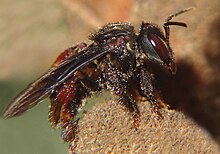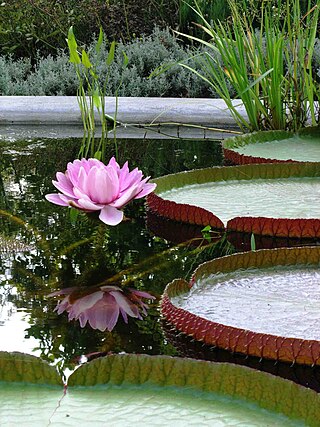
Victoria or giant waterlily is a genus of aquatic herbs in the plant family Nymphaeaceae. Its leaves have a remarkable size: Victoria boliviana produces leaves up to 3.2 metres (10 ft) in width. The genus name was given in honour of Queen Victoria of the United Kingdom.
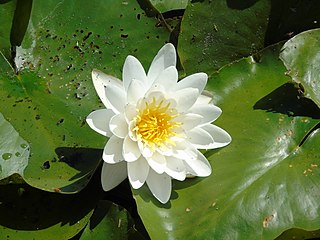
Nymphaea is a genus of hardy and tender aquatic plants in the family Nymphaeaceae. The genus has a cosmopolitan distribution. Many species are cultivated as ornamental plants, and many cultivars have been bred. Some taxa occur as introduced species where they are not native, and some are weeds. Plants of the genus are known commonly as water lilies, or waterlilies in the United Kingdom. The genus name is from the Greek νυμφαία, nymphaia and the Latin nymphaea, which means "water lily" and were inspired by the nymphs of Greek and Latin mythology.
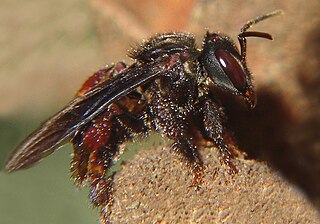
Trigona spinipes is a species of stingless bee. It occurs in Brazil, where it is called arapuá, aripuá, irapuá, japurá or abelha-cachorro ("dog-bee"). The species name means "spiny feet" in Latin. Trigona spinipes builds its nest on trees, out of mud, resin, wax, and assorted debris, including dung. Therefore, its honey is not fit for consumption, even though it is reputed to be of good quality by itself, and is used in folk medicine. Colonies may have from 5,000 to over 100,000 workers.
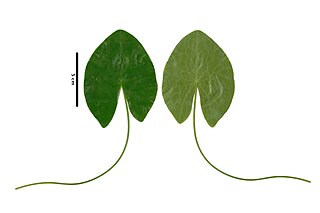
Nymphaea glandulifera is a species of waterlily native to tropical America.

Nymphaea gardneriana is a species of waterlily native to Cuba and tropical South America.
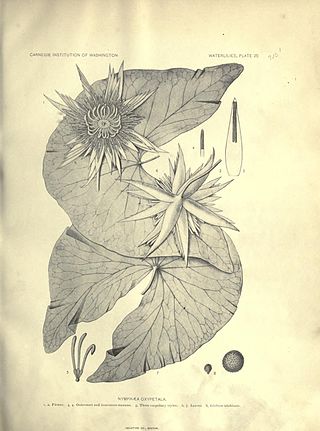
Nymphaea oxypetala is a species of waterlily native to Bolivia, Brazil, Cuba, Ecuador, Paraguay, and Venezuela. It is a remarkable species with excessively acuminate and acute sepals and petals.
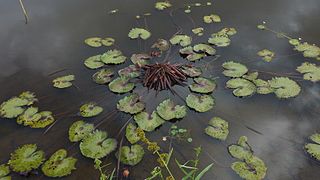
Nymphaea rudgeana is a species of waterlily native to the region spanning from Mexico to tropical South America.
Nymphaea tenuinervia is a species of waterlily native to Colombia, Guyana and Brazil.
Nymphaea belophylla is a species of waterlily native to Bolivia, Brazil and Venezuela.

Nymphaea caatingae is a species of waterlily endemic to Northeast Brazil.
Nymphaea conardii is a species of waterlily native to the region spanning from Southern Mexico to tropical South America.

Nymphaea francae is a species of waterlily endemic to Brazil.

Nymphaea harleyi is a species of waterlily endemic to Brazil.

Nymphaea paganuccii is a species of waterlily endemic to Brazil.

Nymphaea rapinii is a species of waterlily endemic to Brazil.

Nymphaea lasiophylla is a species of waterlily native to East Brazil. It has also been introduced to the Venezuelan Antilles.

Nymphaea vanildae is a species of waterlily endemic to Pernambuco, Brazil.
Nymphaea pedersenii is a species of waterlily native to Argentina, Bolivia, Brazil, and Uruguay.
Nymphaea lingulata is a species of waterlily native to Bolivia, Brazil, and Paraguay.

Nymphaea subg. Hydrocallis is a subgenus of the genus Nymphaea.
